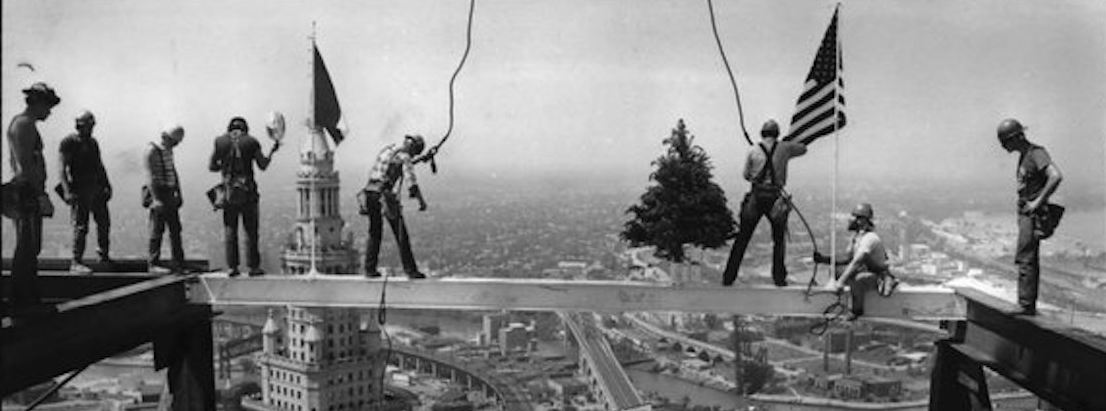From the Plain Dealer/NEOMG May 10, 2015
Author:
Tom L. Johnson and Cleveland Traction Wars, 1901–1909 By ALEXANDRA W. LOUGH
Tom L. Johnson and Cleveland Traction Wars, 1901–1909
By ALEXANDRA W. LOUGH
The link is here
Mayoral Candidate Carl Stokes Speaks at the Cleveland City Club 9.15.67 (Audio)
Mark Hanna vs. Tom L. Johnson by George E. Condon
Terrific chapter on Marcus Hanna and Tom L. Johnson from George E. Condon’s: Cleveland The Best Kept Secret courtesy of Cleveland State Special Collections
The entire book link is here (if it does not load right away, hit “refresh”)
David Abbott Talks on “Regionalism” at Cleveland City Club 4.25.14 (Video)
David Abbott, Executive Director, The George Gund Foundation discusses the importance of regionalism within northeast Ohio and Cleveland, noting the importance of keeping young people in the region and promoting inclusion and diversity to prosper more than the regions that don’t. He says that Cleveland must focus on the future more than reflecting on past glories in order to compete as a region
Ohio – Eye on Education from NPR
Education topics in Ohio presented by NPR (National Public Radio)
An Unconventional Convention – excerpt from The Nation June 1924
Excerpt about Newton Baker’s speech at the 1924 Democratic convention. Baker spoke passionately about the League of Nations.
“Then we had the League of Nations fight, and in this Newton D. Baker undoubtedly distinguished himself–I say it with the more pleasure because I have no admiration for the man himself. Exhausted by days and nights of sleepless labor, his was a marvelous physical achievement. He stirred the delegates so that, as I sat among them, I saw men and women in tears all around me. That was real oratory, though dangerously near the verge of hysteria, dreadfully overemotionalized and accompanied by gesticulations and contortions which revealed the terrible nerve strain the man was under. In more than questionable taste was his assertion that the spirit of Woodrow Wilson looked down from alongside of God’s throne and spoke through his, Baker’s, lips. And I for one could not forget as he told of having seen hundreds of dying American soldiers in France, dying with a prayer on their lips for someone to build a permanent temple of peace upon their sacrifices–that this same Newton D. Baker was one of the men who sent these youths into a needless and fruitless war; that it was he as well as the others of the Cabinet who planted hate and bitterness in their hearts; that it was he who, in the last analysis, was responsible for the torturing of the conscientious objectors; who consented to the crimes of a military court against the Negro soldiers of the 24th Infantry, now being released by Calvin Coolidge; that it was he who forswore and denied his pacifism and liberalism from the beginning to the end of the war.
But if I could not weep with this man, I could freely and cheerfully admit the fervor and conviction with which he spoke and the logical correctness of his position. His party ought to favor the League of Nations or be against it; it has now resorted to a subterfuge which leads nowhere and will probably be followed in 1928 by a failure to mention the League at all. As things stand, tactically Baker went too far; the Republican newspapers are already harping upon his declaration that defeat for his long-drawn-out and bitterly worded amendment meant the disavowal of Woodrow Wilson by Woodrow Wilson’s party. Nor was it wise to denounce so unreservedly as traitors and quitters the men who differed with him on this issue. But here, too, we got a thrill; we had a real debate; we had a speech which stirred the emotions, which tore passion to tatters, which made the delegates think and ponder and weep. And having thought and pondered and wept, whether because of their own volition or because of the cracking of the party whips, they voted two to one against Newton Baker –one wondered if those who wept were allowed to vote. And so the League of Nations is laid on the shelf. The referendum agreed to cannot come to pass in years, if ever, and no one will be happier than the Democratic senators in Washington, for those who are on the inside tell me that there are not over five senators who are really heart and soul in favor of the League. The rest give it lip service because the party tells them to.”
Tom Johnson’s Obituary American Magazine
Marcus A. Hanna and Theodore E. Burton
From the Ohio Historical Society Journal
